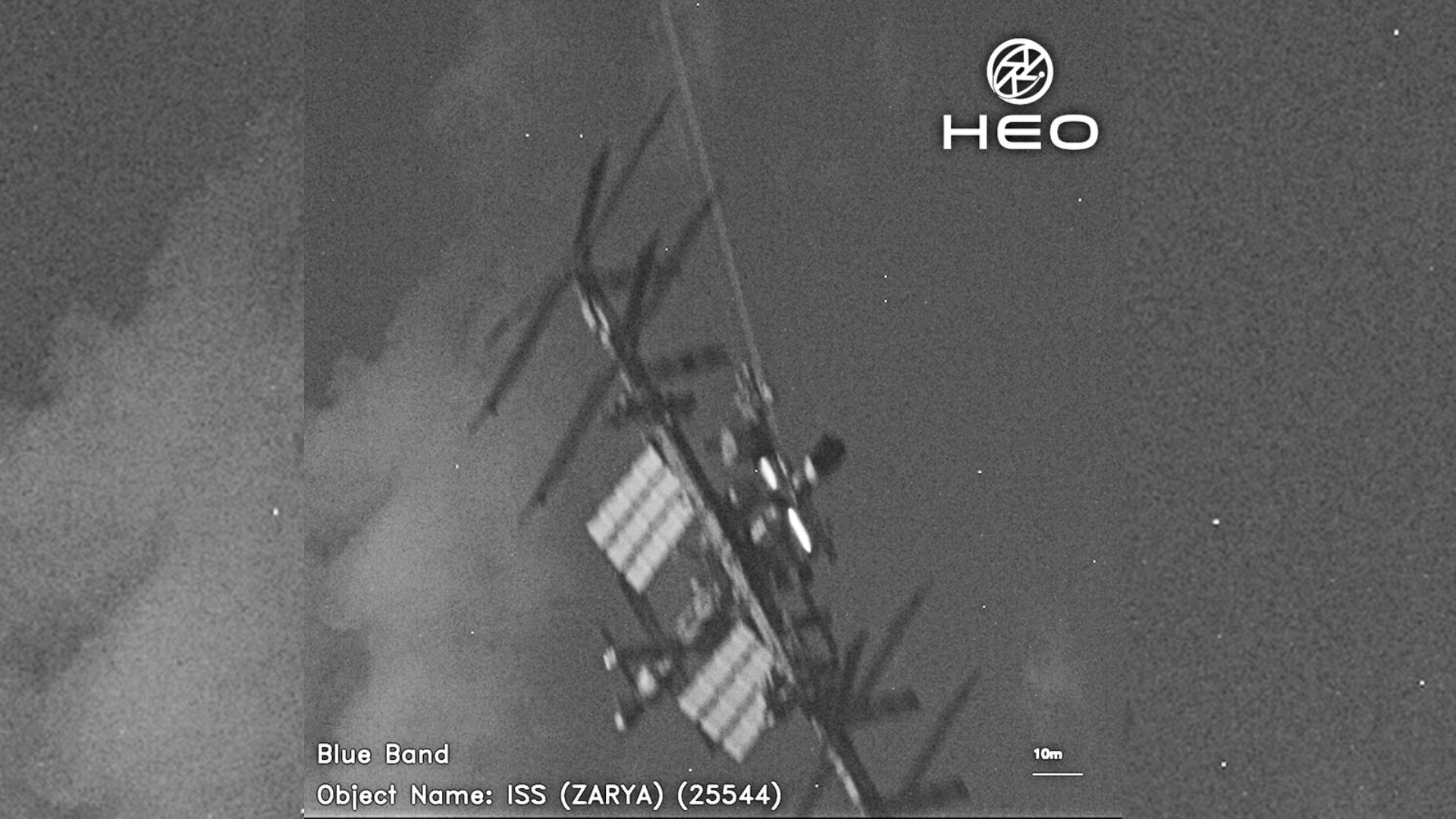Australia-based HEO Robotics captured an incredible image of the International Space Station (ISS) with one of its satellites.
The ISS and the satellite were moving at 3.7 miles (6 km) a second relative to each other and came within 43 miles (69.06 km) of one another.
While the two objects were never in danger of hitting each other, the striking imagery brings to mind recent close calls – the ISS has had to maneuver out of the path of space debris several times in recent years.
HEO Robotics’ satellites observe Earth and its surrounding area using imagers and sensors. This image of the ISS was captured using one of the company’s proprietary satellites.
An impressive shot of the ISS
HEO Robotics shared its image of the ISS on Tuesday, May 13, on social media platform X. “Non-Earth imaging provides the best view of satellites in space,” the company wrote.
“We captured this image of the ISS as it passed over the Indian Ocean from a satellite 69.06 km away.”
It’s not the first time the Australian company has photographed objects traveling at high speed in orbit. On Feb. 14, 2024, HEO Robotics also captured images of the European Space Agency’s (ESA) ERS-2 Earth observation satellite as it was approaching reentry into Earth’s atmosphere.
In 2023, HEO Robotics released a time-lapse showing the construction of China’s three-module Tiangong space station. At the time, the company posted on X that “using our non-Earth imaging capability, we witnessed a story unfold over an 18-month timeframe. Each stage you see was verified with a photo taken from another satellite in space.”
The video shows the Tianhe core module receiving cargo supplies and crews from the Tianzhou and Shenzhou spacecraft. Eventually, the Wentian and Mengtian modules were also added to the station.
The ISS’s recent close calls
The relatively close-up image of the ISS recalls recent close calls for the station. The space station has had to fire its thrusters several times to avoid space junk traveling around Earth at thousands of miles per hour.
In 2021, for example, it had to alter its trajectory more than once to avoid debris created by a Russian weapon test. Scientists have also warned that the number of satellites flying to low Earth orbit is unsustainable, and it could result in a disastrous Kessler Syndrome scenario – a cascading effect of destruction that would create vast amounts of space shrapnel.
The US space agency says it performs an avoidance maneuver even when there is a one in 100,000 chance of a small piece of space debris hitting the ISS. Unfortunately, the likelihood of something entering that window grows larger as the space debris problem continues to grow.
ABOUT THE EDITOR
Chris Young Chris Young is a journalist, copywriter, blogger and tech geek at heart who’s reported on the likes of the Mobile World Congress, written for Lifehack, The Culture Trip, Flydoscope and some of the world’s biggest tech companies, including NEC and Thales, about robots, satellites and other world-changing innovations.

Dr. Thomas Hughes is a UK-based scientist and science communicator who makes complex topics accessible to readers. His articles explore breakthroughs in various scientific disciplines, from space exploration to cutting-edge research.








